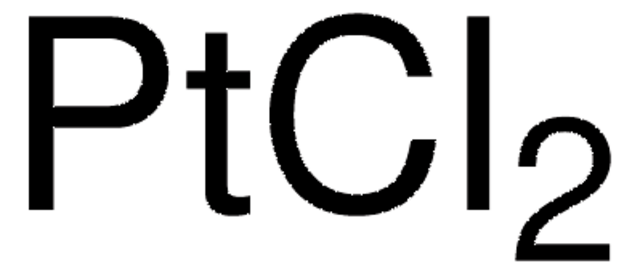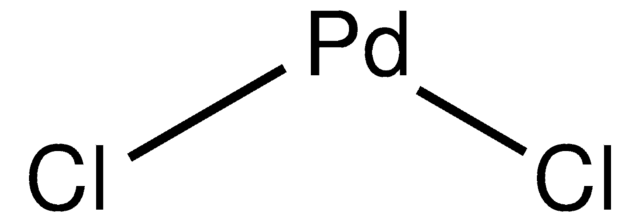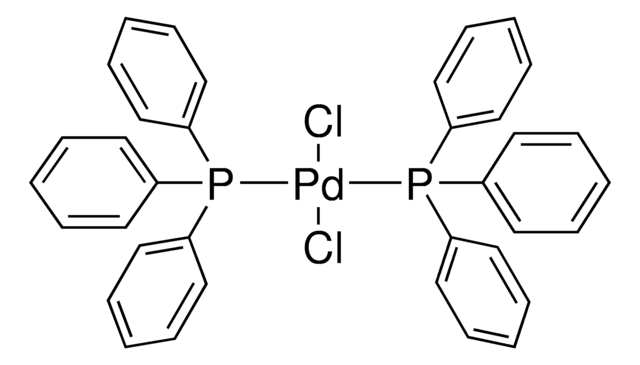206075
Potassium tetrachloroplatinate(II)
98%
Sinónimos:
Potassium platinum(II) chloride
About This Item
Productos recomendados
Nivel de calidad
Análisis
98%
formulario
solid
densidad
3.38 g/mL at 25 °C (lit.)
cadena SMILES
[K+].[K+].Cl[Pt--](Cl)(Cl)Cl
InChI
1S/4ClH.2K.Pt/h4*1H;;;/q;;;;2*+1;+2/p-4
Clave InChI
RVRDLMCWUILSAH-UHFFFAOYSA-J
¿Está buscando productos similares? Visita Guía de comparación de productos
Descripción general
Aplicación
- A precursor to synthesize CO-tolerant catalyst for hydrogen-air fuel cells.
- An active and stable catalyst for selective methane oxidation.
- As a starting material to synthesize high-performance Pt-based phosphorescent materials for electroluminescent devices.
Características y beneficios
Palabra de señalización
Danger
Frases de peligro
Consejos de prudencia
Clasificaciones de peligro
Acute Tox. 3 Oral - Eye Dam. 1 - Resp. Sens. 1 - Skin Irrit. 2 - Skin Sens. 1
Código de clase de almacenamiento
6.1C - Combustible acute toxic Cat.3 / toxic compounds or compounds which causing chronic effects
Clase de riesgo para el agua (WGK)
WGK 1
Punto de inflamabilidad (°F)
Not applicable
Punto de inflamabilidad (°C)
Not applicable
Equipo de protección personal
Eyeshields, Faceshields, Gloves, type P2 (EN 143) respirator cartridges
Elija entre una de las versiones más recientes:
¿Ya tiene este producto?
Encuentre la documentación para los productos que ha comprado recientemente en la Biblioteca de documentos.
Los clientes también vieron
Nuestro equipo de científicos tiene experiencia en todas las áreas de investigación: Ciencias de la vida, Ciencia de los materiales, Síntesis química, Cromatografía, Analítica y muchas otras.
Póngase en contacto con el Servicio técnico




![[Pd(OAc)2]3 reagent grade, 98%](/deepweb/assets/sigmaaldrich/product/structures/508/249/99a0ef2c-b77c-4d73-8ed9-0cca05b6b41f/640/99a0ef2c-b77c-4d73-8ed9-0cca05b6b41f.png)











